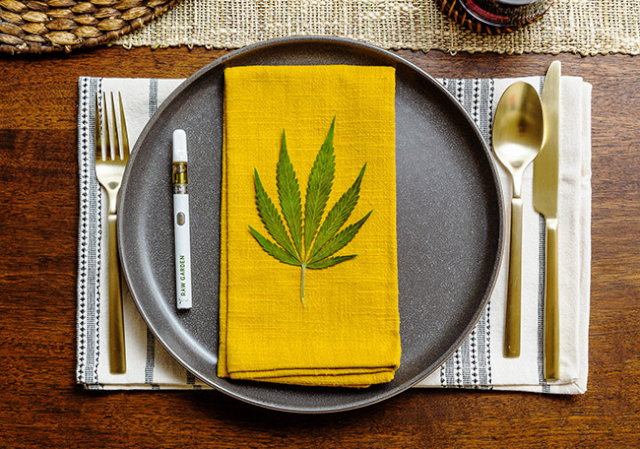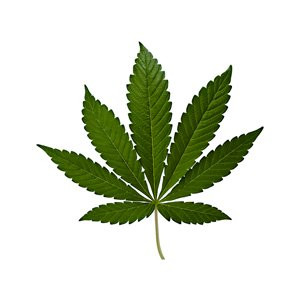Alcohol, tobacco and caffeine became ‘normalized’ within western society after their introduction. Now that recreational weed is legal in Canada, will cannabis, cannabis infused drinks and other products become accepted as a normal part of everyday life?
 Wine and Cannabis Pairings: A nod to normalization of weed in our culture?
Wine and Cannabis Pairings: A nod to normalization of weed in our culture?
We recently posted a question to muse on concerning the growing problem of kids getting their hands on cannabis-infused chocolate and gummy treats. Kids don’t know the difference between commercially made cannabis confections and harmless conventional ones. One gummy or one square of chocolate usually constitutes a ‘dose’ – but kids are used to eating multiple squares of chocolate and hands full of gummies at a sitting. That constitutes a serious overdose. Numbers of kids showing up in hospital emergency rooms with cannabis overdoses has ballooned across Canada since weed was legalized.
My question is… Will cannabis become associated in our social conscience with other common psychoactive substances such as caffeine and alcohol? Or will it remain more or less associated with more-potent ‘drugs’?
Pressure to normalize
There’s considerable pressure from cannabis entrepreneurs to normalize the stuff by infusing its active ingredient, THC, into beverages, confections and other consumable products. The pressure has been subtle, but combining cannabis with familiar fo0ods and treats is seen by some as a means of expanding cannabis use beyond its historic user base. So far, the cannabis industry doesn’t seem to be attracting new users in significant numbers.
But that may still change, as today’s kids grow up seeing weed as an accepted part of their culture, marketed as an additive to otherwise harmless products. “Why not try it?” they may be more likely to reason. Older folks, though, will probably continue to shun the newly available intoxicant. They’re more likely to adhere to the established image of cannabis as a cousin of hard drugs such as cocaine, opiates and tranquilizers.
A little history
There was a time, when Coca Cola first appeared on drug store soda fountain counters, that it got its kick from coca leaf extract. Cocaine.
Wikipedia relates: “[Inventor John] Pemberton called for five ounces of coca leaf per gallon of syrup (approximately 37 g/L), a significant dose; in 1891, Candler claimed his formula (altered extensively from Pemberton’s original) contained only a tenth of this amount. Coca-Cola once contained an estimated nine milligrams of cocaine per glass. (For comparison, a typical dose or ‘line’ of cocaine is 50–75 mg.) In 1903, it was removed.”
The kola nut is also one of the original ingredients, which provides caffeine for the boost. The beverage originally contained the equivalent of 117.6 mg of caffeine per 12 oz can. Today, it contains a more moderate 34 mg of caffeine per can. But that’s still enough to give you a buzz.
Cocaine was common
Cocaine was a common ingredient in ‘tonics’ and ‘pic-me-ups’ during the 19th century. It wasn’t regulated in any way and snake oil salesmen loved the effects it gave their exotic, sometimes toxic, brews. The substance was recognised as a ‘drug’ in the late 19th century and was experimented with by prominent medical men. But folks became aware of its addictive properties and dangerous effects over the succeeding decades and, in 1970, cocaine was systematically regulated until, in 1970, “The production, distribution, and sale of cocaine products is restricted (and illegal in most contexts) in most countries as regulated by the Single Convention on Narcotic Drugs, and the United Nations Convention Against Illicit Traffic in Narcotic Drugs and Psychotropic Substances. In the United States the manufacture, importation, possession, and distribution of cocaine are additionally regulated by the 1970 Controlled Substances Act,” as Wikipedia reports.
But that didn’t stop organized crime from championing cocaine as a miracle revenue producer. Today it’s estimated that cocaine retailing has become a $70 billion per year industry in the U.S. alone.
So where does cannabis fit in?
In spite of the proven harm that substances such as alcohol and nicotine can do to the human body, they remain legal, though heavily regulated and taxed. The common wisdom is that governments would rather let folks get sick from abuse of these substances – and allow society to shoulder the immense burden of treating the afflicted – than to forego the equally immense tax revenues that controlled sale of these ‘stimulants’ generates.
In Canada, at least, the federal government decided to take control of cannabis in 2017 and weed became officially legal for recreational use in October, 2018. But the provinces (like U.S. states) were left to decide how to regulate production, distribution and sales. What a mess. The provinces eventually did come up with regulation, taxation and enforcement plans. The closest analogue to the cannabis situation as it stands today is the system by which alcoholic beverages are regulated. Specially licensed stores are allowed to sell approved cannabis products, and governments rake off fat tax surcharges.
Anti-cannabis proponents originally thought legalization would result in the mass popularization of the stuff, on a par with alcohol. But after the taxes were added and the sales regulations limited competition to a few approved growers, the retail prices came out at or above what the stuff used to cost, on the illicit street market. Taking into account that folks who can now grow weed at home legally, for their own use, and you get a severely restrained retail market for the commercial stuff. And because of the high retail price (not even competitive with tobacco, in spite of the constantly escalating taxes on that ‘street drug’) plus the lingering doubts about the safety of cannabis, most adults who didn’t ‘do’ it before aren’t aren’t consuming it now. Many major commercial weed growers are relying, now on the proliferation of cannabis edibles and drinkables to keep their operations afloat. We’ll see…
Bottom line
Is weed a valid analogue to alcohol in modern society? My motivation to pose this question came upon the discovery of an item in another food blog titled ‘Wine and Cannabis Pairings That Go Perfect With Your Friendsgiving Dinner’. If that isn’t a nod to normalizing weed, I don’t know what is. It also confirms a common perception that ‘weed is as benign as alcohol’. That’s an unfortunate misperception when you compare the magnitude of the damage alcohol does across society to the toll cannabis takes, which is much smaller.
Should we accept the normalization of cannabis in our culture? Or keep it tightly regulated and maintain a perception of abiding danger in its use, to be weighed against the pleasure it promises?
Muse on that…
~ Maggie J.

